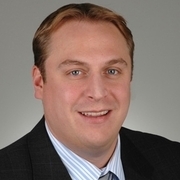How to Sustainably Bend the Cadillac Tax Cost Curve
"The amount employers spend on healthcare will rise faster than the thresholds, eventually affecting every employer plan."

- The Cadillac of healthcare coverage is the talk of the healthcare industry as 2016 draws nearer. The United States Senate recently voted 90-10 to repeal the Cadillac Tax – a 40 percent excise tax and Affordable Care Act component set to kickoff in 2018.

To learn more about the greater implications of this month’s surge of Cadillac Tax activity, RevCycleIntelligence.com interviewed Adam C. Solander, an Epstein Becker Green member in the Health Care and Life Sciences practice based in Washington, DC.
RevCycleIntelligence.com: What are your general reactions to the Senate vote of 90-10 to repeal the Cadillac Tax?
Adam C. Solander: The recent vote to repeal the Cadillac Tax is a strong acknowledgement that there is bi-partisan support to repeal or significantly amend the Cadillac Tax.
While the Administration has repeatedly stated that they will veto any legislation that repeals the Cadillac Tax this could signify a mandate for the next administration to deal with this issue.
RevCycleIntelligence.com: How will this excise tax affect the health benefits plans for industries across the nation?
ACS: The Cadillac Tax will totally reshape how benefits are offered to employees. This is largely because of the way the Cadillac Tax thresholds are indexed for inflation.
The thresholds that trigger the tax are indexed based on the Consumer Price Index (CPI-U) and not medical inflation.
Because medical inflation far outpaces the CPI-U, the amount employers spend on healthcare will rise faster than the thresholds, eventually affecting every employer plan.
As a result, employers need to find strategies to bend the cost curve and stay under the thresholds while still providing a meaningful benefit to their employees.
As a result, we are seeing a trend toward more accountable payment models and more of a focus on population health and telehealth initiatives.
RevCycleIntelligence.com: What are some of the best purchasing method strategies to consider at this stage in the game?
ACS: Right now, employers need to understand the cost drivers in their plans and put in place strategies to address them.
In every plan, there a couple of disease conditions that disproportionately contribute to the overall cost of the plan. Prioritizing and addressing these cost drivers has to be the first step in a Cadillac Tax strategy.
The good news is that most of these conditions are common to all employers and there are both population health and payment options available to address them.
RevCycleIntelligence.com: What is the greater role of population health in regard to all of this?
ACS: There are two things employers must do to bend the cost curve in a sustainable way. First, they must change the way in which they pay for healthcare and start paying for value.
The other side of the equation is that employers must find ways to make their employee populations healthier. Population health has to be a priority for employers.
 Is a two-year extension and delay on its way?
Is a two-year extension and delay on its way?
In other recent news, a two-year Cadillac Tax delay may indeed be in the cards, the Hill reported Tuesday.
"Clearly, we're moving forward with the two-year extension and considering adding a medical device and a Cadillac tax pause on there," said Kevin Brady, House Ways and Means Committee Chairman. This to-be-determined decision will be made prior to the bill being taken up by the House Rules Committee, Brady asserted.
The leading objective of the two-year bill is about "ensuring Americans that before we leave, we will do our work on these tax extenders," Brady stated. "The clock is ticking, it has to be done, it must be done."
"We are confident that all the states are sustainable for the period of time that they need to be sustainable for," said Andy Slavitt, Administrator of the Centers for Medicare & Medicaid Services (CMS), when recently implored by lawmakers with the House Energy and Commerce Subcomittee about the likelihood of upcoming financial challenges.
States have returned $200 million in federal funds, confirmed Slavitt. CMS has denied a total of 69 funding requests this year from states, he asserted.
“I wouldn’t represent that our team finds everything. … I would say we have multiple pieces of the process, most important being prevention," he said. "The smaller the state is, the greater the amount of effort we need to focus on them to make sure they have a plan that is sustaining them.”
